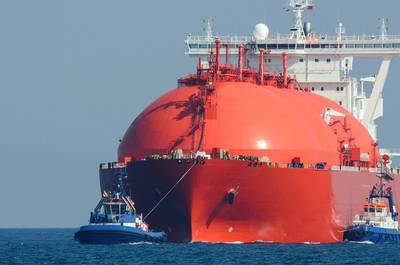Gaslog Inks Tanker Deal with Panama Power Project
Liquefied natural gas (LNG) shipping company Gaslog Ltd said on Wednesday it had struck a deal to lease a tanker for 10 years to a gas-to-power project in Panama being developed by a Chinese company and supplied by Royal Dutch Shell.
Gaslog will convert the Gaslog Singapore, currently used as a conventional LNG tanker on the short-term spot market, into a floating storage unit (FSU) that will receive and store LNG off the coast of Colon, a port on the mouth of the Panama canal.
The LNG will then be piped to an onshore regasification facility and the consequent gas used as feedstock in a power plant being built by Sinolam Smarter Energy LNG Power Co, a unit of private Chinese investment firm Shanghai Gorgeous.
Shell won the contract to supply the LNG last year . It has long-term supply contracts with Cheniere Energy, which operates the U.S. Sabine Pass and Corpus Christi export facilities in Louisiana and Texas, a relatively short trip away.
Panama began importing LNG last year after the arrival of a floating storage and regasification unit (FSRU). The vessel, also a modified LNG tanker, was chartered by Engie, which is supplying 0.4 million tonnes of LNG a year, some of that from Sempra's Cameron LNG plant in Louisiana.
Gaslog's deal with Sinolam LNG enables it to switch to a long-term contract the third tanker of six that had been in the Cool Pool shipping alliance with fellow LNG tanker company Golar Ltd.
Cool Pool chartered tankers on the short-term spot market until it was unwound earlier this year as Golar wanted to focus on integrated LNG projects, including a large one in Sergipe in Brazil, while Gaslog sought longer-term contracts.
Gaslog CEO Paul Wogan said the deal "once again demonstrates Gaslog’s ability to execute on our strategic objectives of locking in long-term stable revenues and full utilization on one of our existing open vessels".
The industry expects shipping rates to increase in the next 18 months because growth in the number of tankers will not keep up with soaring LNG production from regions as far wide as the United States, Australia and Russia.
Rates spiked to a record high last year as ship availability dropped in the lead up to winter, when Asian traders first sought to boost their gas inventories and then used tankers as storage in the hope of rising LNG prices.
"Given the price for LNG this year we may not see so much storage," Wogan said. "We will see rates improving but not to the levels that we saw in the previous year but neither will we see the market coming off in the way it did earlier this year."
LNG shipping rates were at about $65,000 a day for a 160,000-cubic-metre tanker in the Pacific and $68,000 in the Atlantic. That compares to a peak of just under $200,000 a day last year and rates as low as $35,000 a day for both basins.
Reporting by Sabina Zawadzki














